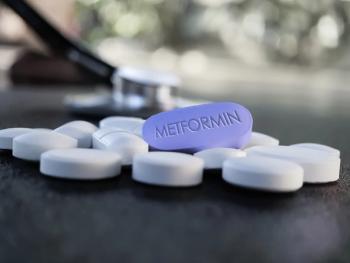
Embryo Transfer Techniques and Pregnancy Outcomes
OBGYN.net Conference CoverageAdvances in Infertility, January 2002
Hans van der Slikke, MD, PhD: “It’s January of 2002, and we’re in Florida at the Advances in Infertility Treatment Conference. Next to me is Stephen Corson from Philadelphia and Thomas Jefferson University. Welcome, Stephen.”
Professor Stephen L. Corson, MD: “Hans, hello.”
Hans van der Slikke, MD, PhD: “You have a presentation in this conference next Saturday where you compare several techniques of embryo transfer and you’re so kind to give us a sneak preview of this presentation.”
Professor Stephen L. Corson, MD: “I was asked to review embryo transfer with respect to the techniques and how they might affect pregnancy rates. First, if you do some surveys and this has been done, one in the UK and one in Australia, as to what IVF clinics think is important about transfer, you usually come up with a list that looks at whether the patient has a hydrosalpinx or not, the type of catheter which is used, the difficulty of the transfer, whether there’s blood in the catheter, whether the catheter is a hard catheter or a soft catheter, and less with ultrasonography which we actually think is important. So it’s nice to know what the people think but you also need to know that sometimes the opinions are not really based on data. The hydrosalpinx story is, however, well documented. Strandell originally brought attention to the fact that women who had a hydrosalpinx had a reduction in the expected pregnancy rate up to 50%, and this was rapidly confirmed throughout the world. What took some time was the other side of the equation which was basically if you remove the hydrosalpinx in those women will the pregnancy rate then come up to what you expect it should be, and happily the answer is yes so that today in many IVF clinics a woman who has a demonstrable hydrosalpinx has a laparoscopic procedure first in which one or both tubes as need be are removed. So that’s one point, the other interesting thing is the issue of what happens at the time of retrieval with bedrest, is that necessary or not? I remember visiting Patrick Steptoe perhaps twenty years ago and watching him perform the embryo transfer with a patient in the knee-chest position on a special bed which had a bumper on it. She was then instructed to slide forward on her abdomen and her roommates had the job that night to keep her not only in bed but to keep her from turning over. We’ve gone from that very rigid kind of thing to letting our patients get up and go five minutes later and the data are pretty clear that it doesn’t matter. However, an interesting study that was done by Knudson and published a decade ago in which they put in 40 microliters of radiopaque dye as a mock transfer and took x-ray pictures, as you might imagine, the dye didn’t always stay where it was put. Sometimes it went up into the tubes and sometimes it leaked out into the cervix, and that brought us to the realization that the uterus is not a quiescent organ. If you look at the pregnancy rate according to the contractility of the uterus and you measure the contractions per minute, you find a rapid decrease in pregnancy rate, as the uterus is more active. Teleologically or intuitively you might think if you were to make that uterus quiet - progesterone being an excellent uterine relaxant - you might increase the pregnancy rate so that a lot of clinics including our program have now begun to augment with progesterone even before the transfer to try to keep that uterus quiet. Part of that picture also is what kind of catheter are you using and where are you putting it, and most clinicians will tell you that it’s best not to touch the top of the uterus. We used to go in and touch the top of the uterus to see where we were and draw back. Evidently even with a soft catheter that is enough to provoke uterine contractions and that’s where the ultrasound comes in. We published a paper looking at results with and without ultrasound and found that with ultrasound our implantation rate and our pregnancy rate were increased so that the catheters are so soft that sometimes as you go in they can bend on themselves and you lose your tactile discrimination. The ultrasound is just marvelous because it allows you to see when you’re entering the uterus, it allows you to see the top of the cavity, and you can really put the catheter exactly where you want it to be. It’s very atraumatic; you do need to do this through a full bladder so it’s an abdominal ultrasound but the patients like it. There’s a little bit of PR in this but the patients can now see the catheter and they can see the air bubble around the embryos and it’s just a very emotionally pleasing procedure.”
Hans van der Slikke, MD, PhD: “It makes it physical for them.”
Professor Stephen L. Corson, MD: “Yes, it makes it real and those are really the high points of embryo transfer. Additionally, I think it’s generally but not universally agreed that the catheter type is important and most studies have shown that the so-called soft catheters like the Wallace and like the Frydman are advantageous compared with the harder catheters, which tend to be more traumatic. Blood in the catheter has always been a frightful experience associated - it was thought - with reduced pregnancy rates but that’s not always true. If there’s blood on the outside of the catheter that denotes a traumatic transfer, and blood on the inside of the catheter seems to be less ominous. We also used to think if the embryos were retained either in the catheter or on the outer edge of the catheter necessitating a second immediate transfer that this was deleterious but, in fact, the literature does not support that - another example of an opinion which was not based on fact so if you have retained embryos in the catheter it’s not the end of the world.”
Newsletter
Get the latest clinical updates, case studies, and expert commentary in obstetric and gynecologic care. Sign up now to stay informed.










